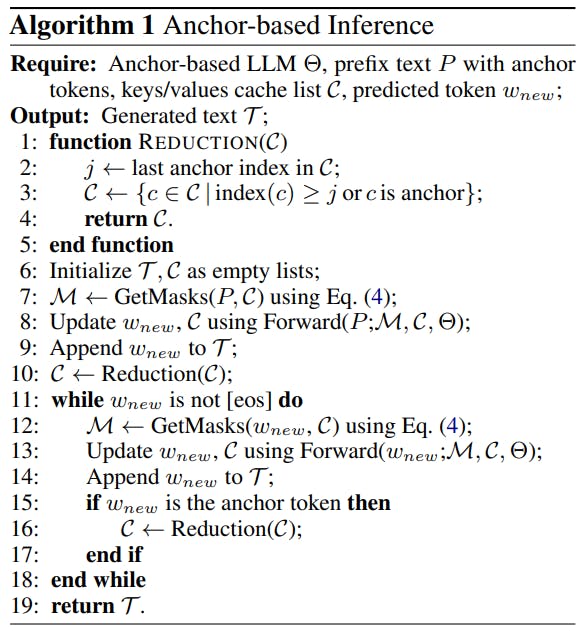
2024-10-11 04:1:30 Author: hackernoon.com(查看原文) 阅读量:0 收藏
Authors:
(1) Jianhui Pang, from the University of Macau, and work was done when Jianhui Pang and Fanghua Ye were interning at Tencent AI Lab ([email protected]);
(2) Fanghua Ye, University College London, and work was done when Jianhui Pang and Fanghua Ye were interning at Tencent AI Lab ([email protected]);
(3) Derek F. Wong, University of Macau;
(4) Longyue Wang, Tencent AI Lab, and corresponding author.
Table of Links
3 Anchor-based Large Language Models
3.2 Anchor-based Self-Attention Networks
4 Experiments and 4.1 Our Implementation
4.2 Data and Training Procedure
7 Conclusion, Limitations, Ethics Statement, and References
3.3 Anchor-based Inference
By training the model to compress information into the anchor token of a natural language sequence, we can optimize the inference process by modifying the keys/values caching mechanism. Specifically, during inference, upon encountering an anchor token that condenses the comprehensive semantic information of preceding tokens in the current sequence, the model can reduce the keys/values caches by deleting the caches of non-anchor tokens within that sequence.
We introduce the inference method in Algorithm 1. The function “REDUCTION” in Line 1 is utilized to remove keys/values caches when the model processes prefix texts in Line 10 or generates an anchor token during the prediction of the next

token in Line 16. This approach aims to reduce the keys/values caches for both prefix tokens and generated outputs during real-time inference.
如有侵权请联系:admin#unsafe.sh